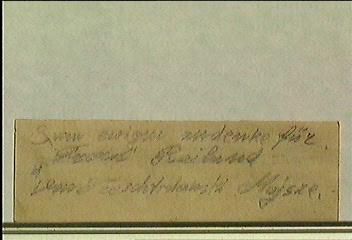A Look at the Visual History Archive's Terezin Testimony
The Jewish Museum in Prague recently debuted a new exhibit dedicated to some of the most notorious pieces of Holocaust propaganda – the Nazi-produced films about the Terezin (Theresienstadt) concentration camp. USC Shoah Foundation’s Visual History Archive is also a unique resource for Terezin remembrance.
Out of 52,000 audiovisual testimonies of survivors and other witnesses to the Holocaust and other genocides, the Visual History Archive contains 2,212 testimonies that discuss Terezin, including two liberators and two rescuer/aid providers.
Called “Truth and Lies: Filming in the Terezin Ghetto 1942-1945,” the museum exhibit covers the making of the films Ghetto Theresienstadt and Der Führer Schenkt den Juden eine Stadt (The Fuhrer Gives the Jews a City). It features the surviving film fragments, including some fragments which have never been seen before, photographs taken in secret during the filming, documentary footage of the filming, and documents and photographs that have never been viewed publicly.
The Nazis produced the films to quell rumors that atrocities were being committed against Jews. Terezin prisoners were forced to take part in the filming as crew members and actors, and the films portrayed Terezin, a transit ghetto from which hundreds of thousands of Jews and other prisoners were transported to death camps including Auschwitz, as an idyllic and peaceful haven for Jews. Most of those who appear in the films, as well as Der Fuhrer Schenkt den Juden eine Stadt’s Jewish director Kurt Gerron, were later murdered.

One testimony in the Visual History Archive, from survivor Hana Fousova, also contains a rare Terezin artifact. Fousova’s mother was one of the child care staff deported from Terezin to Auschwitz with the “Bialystock children” on Oct. 5, 1943. The Bialystock children were a group of over 1,000 children from the Bialystock ghetto in Poland for whom a deal was negotiated to send them to safety in Palestine; however, the deal fell through and the children were ultimately killed in Auschwitz.
In her testimony, Fousova shows a note from one of the children that was smuggled out of Terezin – a Rosh Hashanah greeting card from a boy named Mejszel Treszczanski.
The Jewish Museum in Prague recently teamed with USC Shoah Foundation to produce a lesson plan for teachers in the Czech Republic titled “International Committee of the Red Cross and Terezin.” The lesson uses testimony from the Visual History Archive to teach secondary students about the Red Cross’s infamous visit to the “beautified” Terezin in 1944.